Want to shoot birds, deer, safari and other exotic wildlife the humane, dare I say, beautiful way? Then you’re gonna need a longer lens – a really longer lens! These whacking great optics have got you covered!

This article features affiliate links and I get paid commission on your purchases. However, all views expressed are my own. Prices correct at time of publication.
Capturing the best of the animal kingdom is a game of two halves: cameras and lenses (or five fifths if you include tracking, luck and location). Presumably you’ve already picked up the perfect camera, so that narrows the field – a little, anyway. Nabbing the perfect optic is where it gets really tough. Do you go for portability or prowess? Aperture or affordability? Prime or zoom? There’s almost as many important questions as animals! Lucky you, that’s where I come in.
Focusing on the perfect lens for birding or beasts – pun intended – still throws up plenty of options, depending on your preferred camera manufacturer. I’ve put together a list of the best and brightest for a range of different camera mounts and budgets. Whether it’s the third-party optic that’s a popular gateway or the prestige own-brand versions renowned for excellence, these will all get you fantastic results.
I considered standards such as ease of use, value for money, aperture, size and weight and the all-important image quality. I’ll also be looking at the first-party offerings from the likes of Canon, Nikon, Sony and Fujifilm, as well as the excellent value-for-money third-party superzoom from Sigma – a company known to pack a high quality punch for a fraction of the cost.
Finally, as you’d expect from specialist lenses, these lengthy superzooms come at a varying array of prices. However, while 600mm may sound like an intimidating specialist-only focal length, these lenses are actually among the most versatile optics on the market. Whether it’s wildlife or sports or even astro photography, landscapes or macro style images – yes, really – there’s plenty of fun to be had!

TOP LENSES FOR BIRD, WILDLIFE AND ACTION PHOTOGRAPHY
1. SIGMA 150-600MM F5-6.3 DG OS HSM | CONTEMPORARY
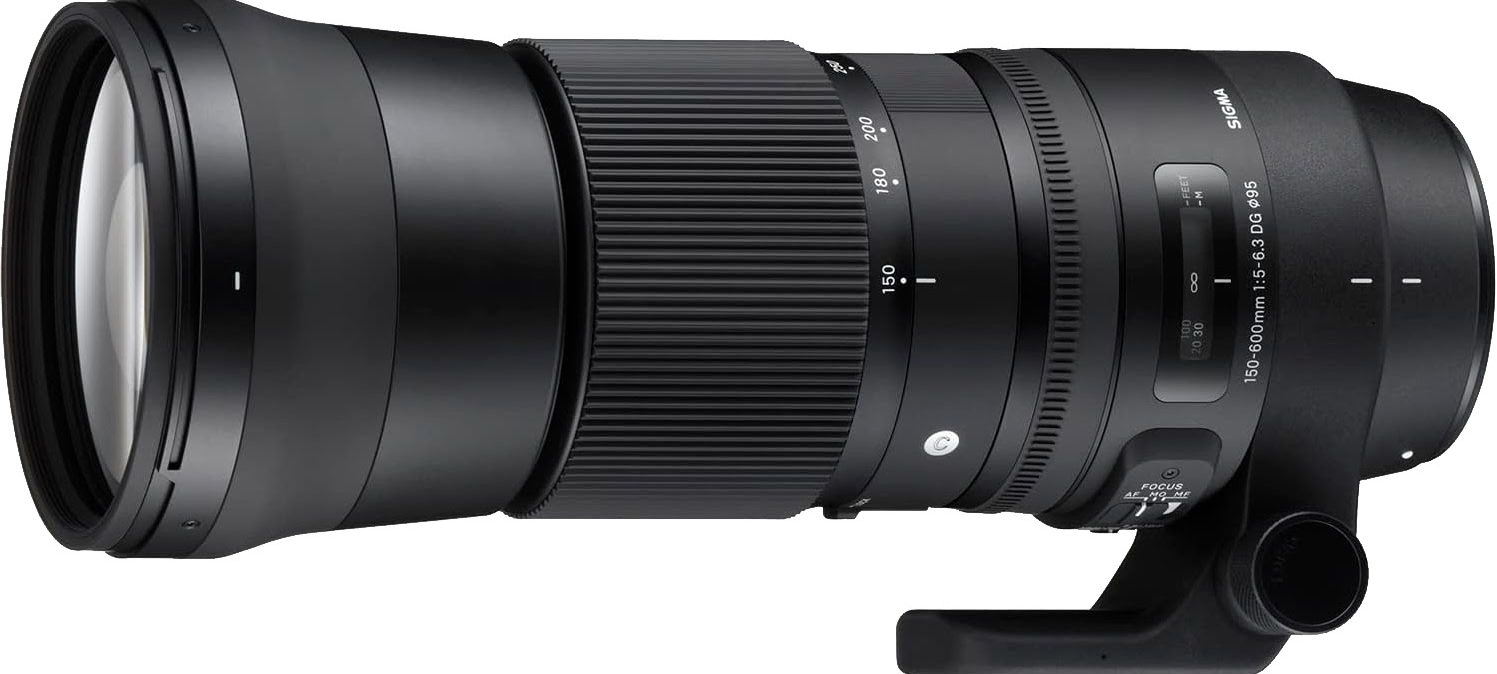
Pros
-
- Great price
-
- Relatively lightweight
-
- Solid build
Cons
-
- Not the sharpest at longer focal lengths
Kicking off with an incredibly popular choice that’s undoubtedly launched the careers of many budding wildlife photographers, Sigma’s ‘entry-level’ superzoom boasts a solid build with splash-resistant design and a standard F5-6.3 variable aperture, starting at F5 at the widest end and dropping down as you zoom further in.
The focus system is showing its age, and you will witness chugging and focus hunting. However, use it right and it’s more than competent for most types of shot with a competitive keeper rate. That goes double when paired with a camera that’s known for solid autofocusing.
It’s relatively lightweight for the category, coming in at 1830g, and offers a tripod socket to allow you to mount the lens on a tripod or monopod for additional support (mounting the lens and not the camera offers increased balance and stability), as well as OS (optical stabilisation) for hand-held assistance.
The image quality and sharpness are respectable, though a little softer when zoomed in. That said, it’s more than enough for most people’s needs and a little sharpening in post-process is all you need. If it’s not sounding appealing enough yet, it’s also great value for money and available for Canon and Nikon DSLRs. You can also pair with Nikon Z and Canon RF bodies using their respective adapters, but the autofocus may suffer a little.

SIGMA 150-600MM F5-6.3 DG OS HSM | C
Usually seen as a budget option for DSLRs, Sigma’s 150-600mm is a great budget entry-level optic with impressive results.

SIGMA 150-600MM F5-6.3 DG OS HSM | C
£849Usually seen as a budget option for DSLRs, Sigma’s 150-600mm is a great budget entry-level optic with impressive results.
2. Fujinon 100-400mm F4.5-5.6 R LM OIS WR
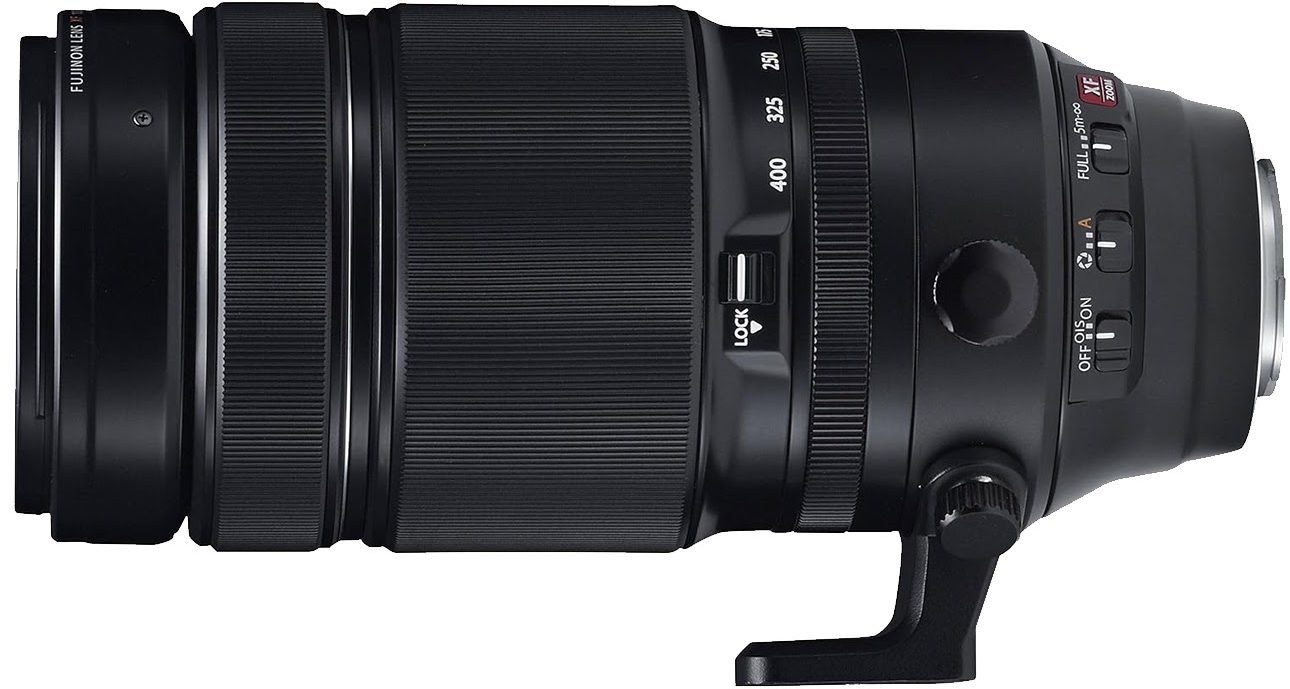
Pros
-
- Robust design
-
- Offers an effective 600mm focal length
-
- Slightly faster aperture
Cons
-
- Heavy lens for the smaller Fujifilm bodies
-
- Gets slightly softer at longer focal lengths
Just a truly stunning bit of Kit, this Fujifilm compatible 100-400mm benefits from the 1.5x cropped APS-C sensor of the X-series to deliver an effective ‘focal length’ of ~150-600mm, putting it on equal fitting with others on the list. Not just a looker, you get extensive weather-sealing, moisture resistant lens coating and a rugged build that feels at home in any pro’s kit.
It’s a bit heavy when you look at Fujifilm’s smaller cameras, but still manageable at 1375g and the tripod mount and 5-stop optical image stabilisation system give you plenty of assistance in lower light levels or at the longer focal lengths.
As with the Sigma, the sharpness does falter slightly at the long end, but a touch of sharpening will work wonders and the images look great. Pair all of that with a rapid and near-silent autofocus system and you’re really on to something.

Fujinon 100-400mm F4.5-5.6 R LM OIS WR – £1482
A great option for all Fujifilm users, this lens offers an effective ‘150-600mm’ focal length thanks to the 1.5x crop factor of the APS-C-sized sensors.

Fujinon 100-400mm F4.5-5.6 R LM OIS WR – £1482
£1699A great option for all Fujifilm users, this lens offers an ‘effective’ 150-600mm focal length thanks to the 1.5x crop factor of the APS-C-sized sensors.
3. Sony 200-600mm F5.6-6.3 G OSS

Pros
-
- Great autofocusing
-
- Top build quality
Cons
-
- A bit bulky on Sony’s small-form cameras
-
- At 200mm it isn’t as wide as others
This competitively priced lens from Sony delivers outstanding image quality across the range and the excellent DDSSM autofocus system will keep up with whatever you throw at. This allows you to take advantage of Sony’s latest in-camera AI tracking algorithms.
It features a rugged dust and moisture-resistant design and the internal zooming mechanism helps maintain balance when in-hand. The aperture range remains competitive, and Sony’s in-camera stabilisation works with the in-lens optical stabilisation to keep your shots in sharp focus and shake-free. You also have the obligatory tripod mount if you’re looking for some extra stability.
It’s not the lightest lens, tipping the scales at 2115g, but it’s more than manageable hand-held for shooters who are looking to work unrestrained. If you’re rocking a Sony E-mount camera, this one is a must!

Sony 200-600mm F5.6-6.3 G OSS
A great option for all Fujifilm users, this lens offers an effective ‘150-600mm’ focal length thanks to the 1.5x crop factor of the APS-C-sized sensors.

Sony 200-600mm F5.6-6.3 G OSS
£1559A great option for all Fujifilm users, this lens offers an effective ‘150-600mm’ focal length thanks to the 1.5x crop factor of the APS-C-sized sensors.
4. Canon RF 100-500mm F4.5-7.1L IS USM
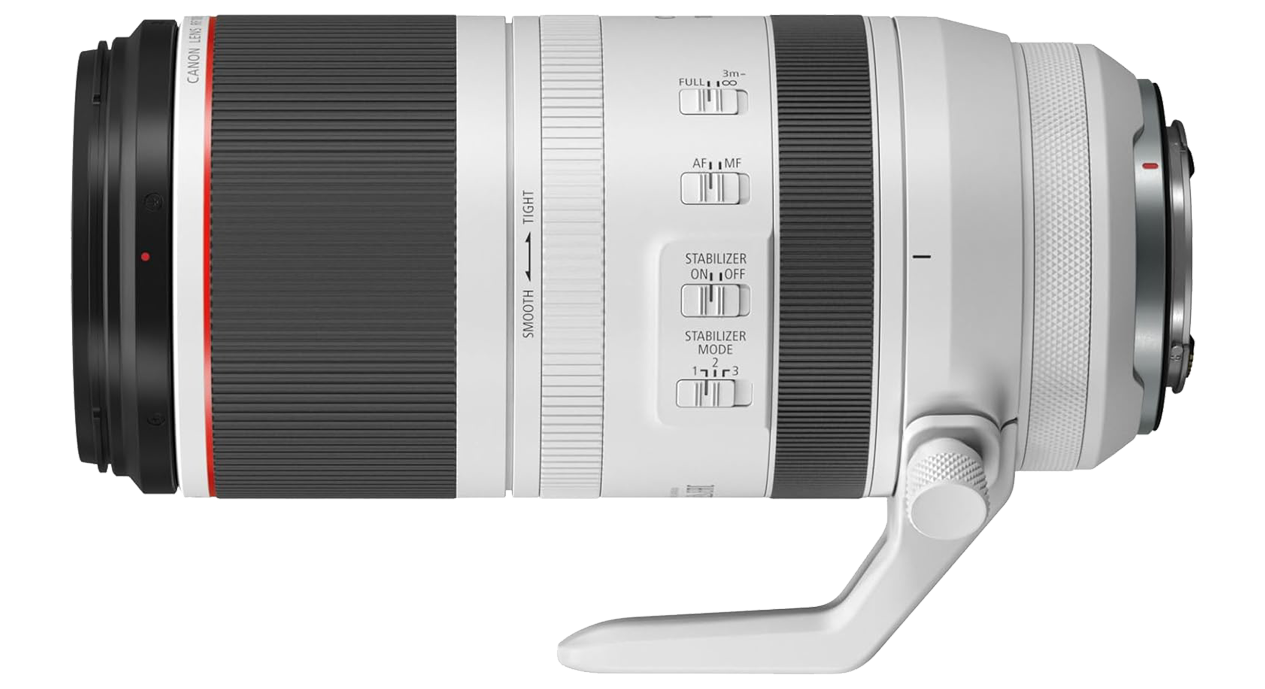
Pros
-
- Top image quality
-
- Pro-level build
-
- Excellent autofocus
Cons
-
- Expensive
-
- Slower maximum aperture
Offering the largest zoom range on Canon’s mirrorless RF system, the 100-500mm comes with a formidable reputation for superb image quality. It also offers an excellent Dual Nano USM autofocus system and a tough, fully weather-resistant build you’d expect from Canon’s L-series.
While it doesn’t quite reach the 600mm reach of others on this list, it’s still a competitive focal length. Paired with the modern EOS R bodies it will give you plenty of scope for cropping. The minimum F7.1 aperture at 500mm may be a touch slower than others on this list, but the image stabilisation offers up to 5 stops – 6 stops when paired with a compatible camera body. Plus, the obligatory tripod mount allows for additional stability when the light starts to fade. That said, optically it’s a fantastic lens that really shines in terms of image quality and is sure to give you stunning results.

Canon RF 100-500mm F4.5-7.1L IS USM
Canon’s RF lens Range is growing rapidly and this is the best superzoom option for the system. It’s got a great reputation, but a big price tag!

Canon RF 100-500mm F4.5-7.1L IS USM
£2592Canon’s RF lens Range is growing rapidly and this is the best superzoom option for the system. It’s got a great reputation, but a big price tag!
5. Sony FE 600mm F4 GM OSS
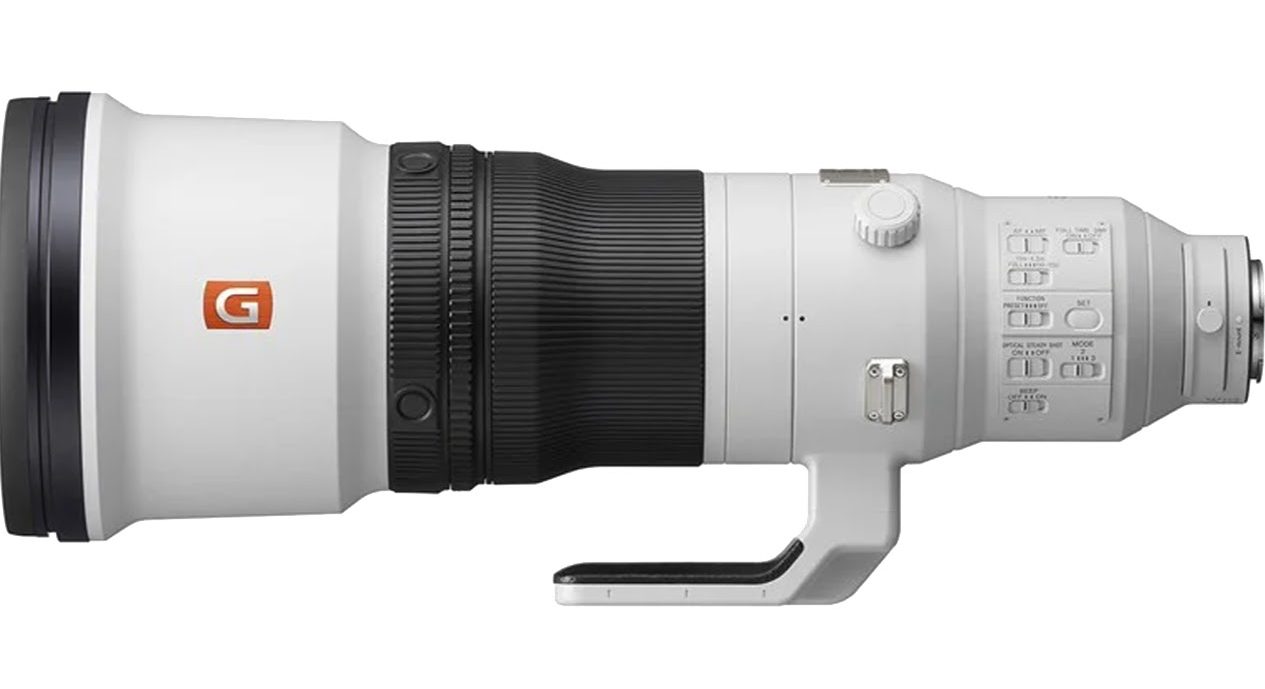
Pros
-
- Exceptionally sharp
-
- Excellent autofocus
-
- Wider F4 aperture
-
- ‘Comparatively’ good value – honestly
Cons
-
- Still very expensive
-
- Lacks versatility of a zoom
Built exclusively for professional photographers, this 600mm prime is aimed squarely at sports and wildlife photographers who can justify the humongous price tag. Thankfully, what you get goes some way to making it a worthy investment.
It goes without saying that the build quality is top notch, with the body being designed to cope with the rigours of fieldwork. It also creates exceptionally sharp images from the wide F4 aperture that will hold up to even the most exacting eye.
You’ll also find Sony’s OSS stabilisation system, but at 3kg you may want to mount this to a monopod or gimbal head using the tripod collar. Finally, the Dual XD linear motors offer first class autofocusing ability to work in tandem with Sony’s brilliant AF systems – better get saving…

Sony FE 600mm F4 GM OSS
Bloody expensive but with a fearsome reputation, this is a pro-level optic with a fixed F4 aperture and ultra-exclusive price tag!!

Sony FE 600mm F4 GM OSS
£11,999Bloody expensive but with a fearsome reputation, this is a pro-level optic with a fixed F4 aperture and ultra-exclusive price tag!!
6. Nikon AF-S Nikkor 200-500mm F5.6 E ED VR
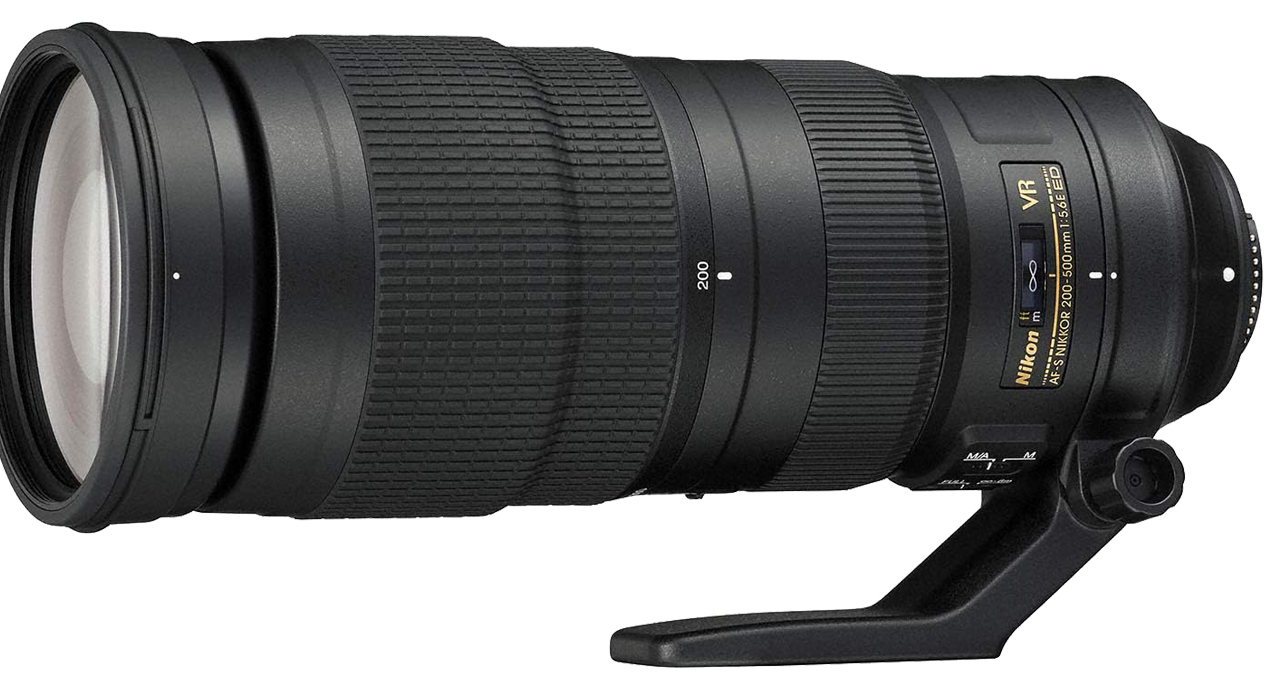
Pros
-
- Constant F5.6 aperture
-
- Excellent build quality
Cons
-
- On the heavier side
-
- Not as much reach as other superzooms
-
- Lacks weather-sealing
If you’re a mirrorless holdout and find yourself still rocking one of Nikon’s DSLRs, such as the excellent D500 or D850, this is a no brainer. It also works with the Z system bodies via the FTZ adapter. Offering a competitive focal length and handy 4.5 stops of in-built image stabilisation, the biggest boon here is the constant F5.6 aperture throughout the focal range.
It features a very robust build quality, evident from the 2300g weight, but sadly doesn’t include weather sealing which may make you think twice about extensive field work when the dark clouds roll in. That said, it’s known for solid image quality and a formidable autofocus ability that means it’s a must-have for hide work or dry days stalking your subjects.

Nikon AF-S Nikkor 200-500mm F5.6 E ED VR
Lacks a little on the longer end… and on the shorter end, too. However, it’s fixed aperture and rugged build are both extreme positives!

Nikon AF-S Nikkor 200-500mm F5.6 E ED VR
£1249Lacks a little on the longer end… and on the shorter end, too. However, it’s fixed aperture and rugged build are both extreme positives!
HOW TO CHOOSE THE BEST LENSES FOR WILDLIFE OR ACTION PHOTOGRAPHY

Picking the perfect optic is relatively easy, as long as you make some wise choices. Firstly, the longer the better. Although many people consider 200 or 300mm to be a relatively ‘long’ focal length, it’s a big ask when you’re talking about filling your frame with a small bird from 50 metres away. We prefer to consider lenses that offer at least 400mm on an APS-C – effectively giving you a 600mm equivalent focal length compared to full-frame cameras, or 500mm on full-frame.
Another myth with today’s tech is image quality and sharpness. For example, if you’re only thinking of adding your final shots to your online portfolio or sharing them with your social media followers as tiny JPEGs, image quality isn’t a concern. Likewise, some of the more premium optics may give your final shots a bit of extra sharpness, but with modern post-processing software and printing practices capable of performing miracles, it really is negligible. If you don’t have the budget to go big, don’t worry, you’re not losing out.
One area spending extra does pay off is the autofocus ability. As with mirrorless camera bodies, focusing motors have been in a state of slow, but constant improvement. Canon’s Nano-USM system or Sony’s Dual XD linear motors are leaps above older tech like stepping motors or screw drives. Arguably, the biggest benefit is in the ability to make fast and near-silent fine-adjustments – essential for tracking fast moving birds or skittish wildlife or making incremental movements to maintain sharp eyes on tiny subjects.
The final consideration is down to the lens design. If you’re only looking to work in a hide you should be able to get away with any lens. However, if you’re spending extended time in the elements you may want to look at something with solid weather-sealing, or at the very least investing in a rain cover. A 600mm lens is not something you’ll be slipping into a pocket. In fact, with some extreme examples, not on this list, weighing up to 15kg, it’s often not something you’ll be wanting to hold in your hands for hours on end. We would highly recommend considering a good monopod or tripod-mounted gimbal head if you’ve been a bit lax with your gym membership.
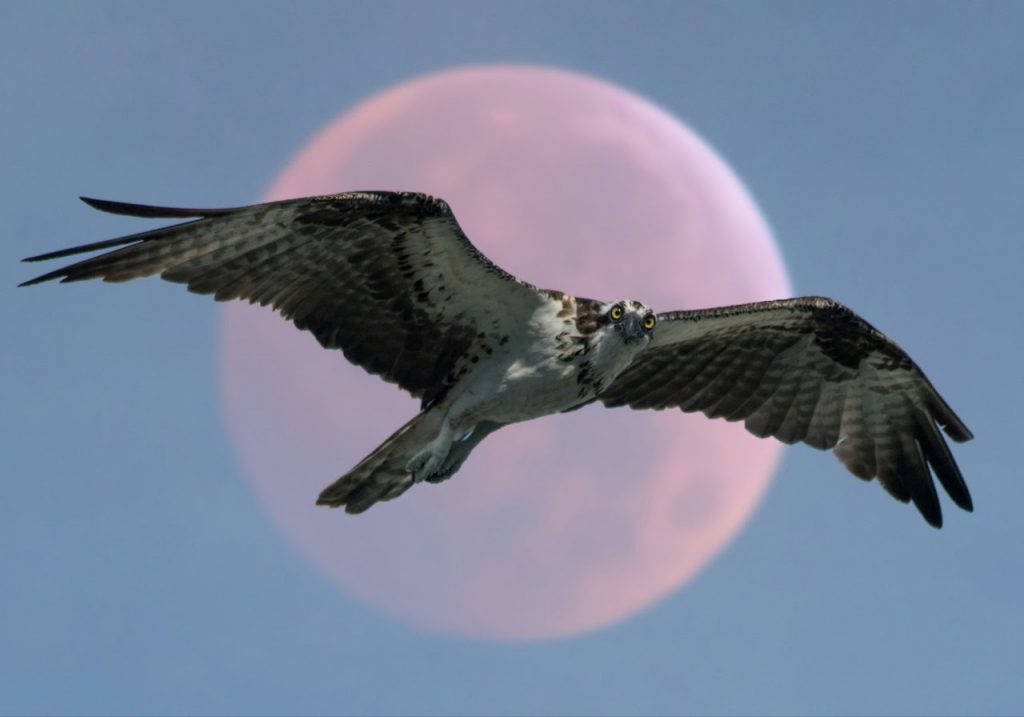
GLOSSARY
Telephoto: a lens with a longer focal length. Super-telephoto lenses, which are the best kind for bird, wildlife, action and sports photographers, are considered to be anything over 200mm
Zoom: a lens that’s able to alter its focal length, I.E. 150-600mm
Prime: a lens with a fixed focal length. I.E 600mm
Aperture: the size of the lens’ aperture mechanism, which regulates the amount of light that enters the lens and hits the sensor. Lower numbers also mean wider depth-of-field, I.E. less in focus and buttery background bokeh!
Image stabilisation: an internal mechanism that works to steady and minimise shake
Weather sealing: referring to steps taken by the manufacturer, such as gaskets, that help to keep dust and moisture from leaking into the optics
Stops: the measurement of light entering the lens/camera’s sensor. Each stop doubles or halves the amount. For lenses a stop is usually controlled by changing your aperture, F2.8, F4, F5.6 etc

FAQs
Do I really need a super-telephoto lens?
Yes. Though 200 or 300mm sounds long, it’s really not as long as you think, especially when your subjects are at a distance and small. To maximise your chances, not to mention minimise the strain on image quality from excessive cropping, it’s best to give yourself a fighting chance!
What if I want a longer focal length?
While there are some lenses that offer longer focal lengths, these are either extremely specialist, extremely expensive, or both. Luckily, many of these lenses are compatible with teleconverters which usually add either 1.4x or 2x zoom to your focal length. However, they will lower your maximum aperture, autofocus capability and image quality in many instances, so do your research!
Are there any other benefits to a longer focal length?
Oh yes! Apart from the obvious reach, compression is a huge factor. Wide angle lenses will show much more of the scene but also makes your background appear further away. With a longer focal length, such as 600mm, your background elements appear closer in-frame since your angle of view is dramatcially smaller. This can be a great way to introduce extra depth in your photos, especially portraits.
Which is better, zoom or prime?
An age-old debate, primes are generally considered to be slightly sharper and show less distortion than zooms, due to their singular design, while zooms are more versatile. In real-world terms the difference is usually negligible. The biggest difference is that telephoto primes often offer wider apertures, but at many times the cost.
Why is aperture important?
The lower the maximum aperture F-stop, the wider the opening and the more light enters the lens, meaning you can shoot in low-light without taxing your camera’s digital gain, or ISO, which risks creating increasingly worse image quality. Also, a wider aperture creates an often desirable shallower depth of field, meaning less of the image is in focus – ideal for creating foreground and background blur.
Can I shoot hand-held with such heavy lenses?
Sure, if you’re relatively fit and healthy all of these lenses are viable for hand-held shooting for short-ish bursts, well into the tens-of-minutes at a time. The biggest problem is that every little shake is magnified due to the focal length – just like longer binoculars pick up any movement. You can combat this shake by using the tripod mount to secure to a monopod or gimbal head, or you can rely on the image stabilisation.
Why are there different image stabilisation modes?
The stabilisation modes are each geared up for different shooting scenarios, such as general use, where it combats the X and Y axis, or panning, where it only combats the vertical movement, since you’ll be moving the lens on the horizontal axis to track your subject.
Do I need weather sealing?
Yes and no. All lenses and cameras are actually described with a bit of a get out clause, such as ‘dust and moisture-resistant’ – points of potential entry have been given a weather sealing mechanism, such as a gasket, but there’s no guarantee. That said, if you expect to be shooting in howling storms with a fighting chance, you’ll want to look for a lens which has some degree of sealing. If you don’t want to get your camera, or yourself, wet, then chances are it’s less important.
What’s the difference between internal and external zoom?
Exactly what it sounds like. A lens with external, or ‘push/pull’ focusing will extend or contract depending on the focal length. An internal focusing lens remains the same size regardless of the focal length, which has the added benefit of always remaining balanced in-hand.

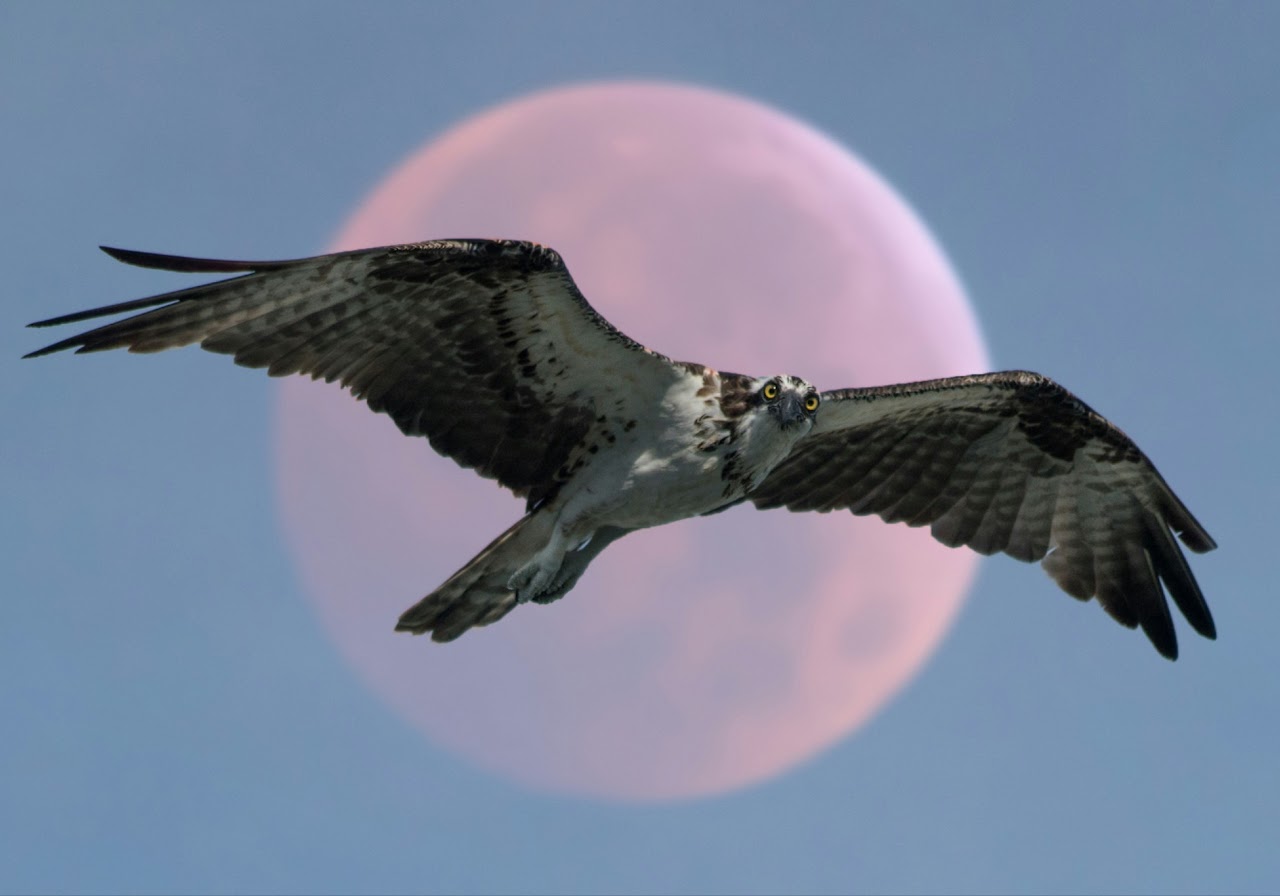

Stay connected